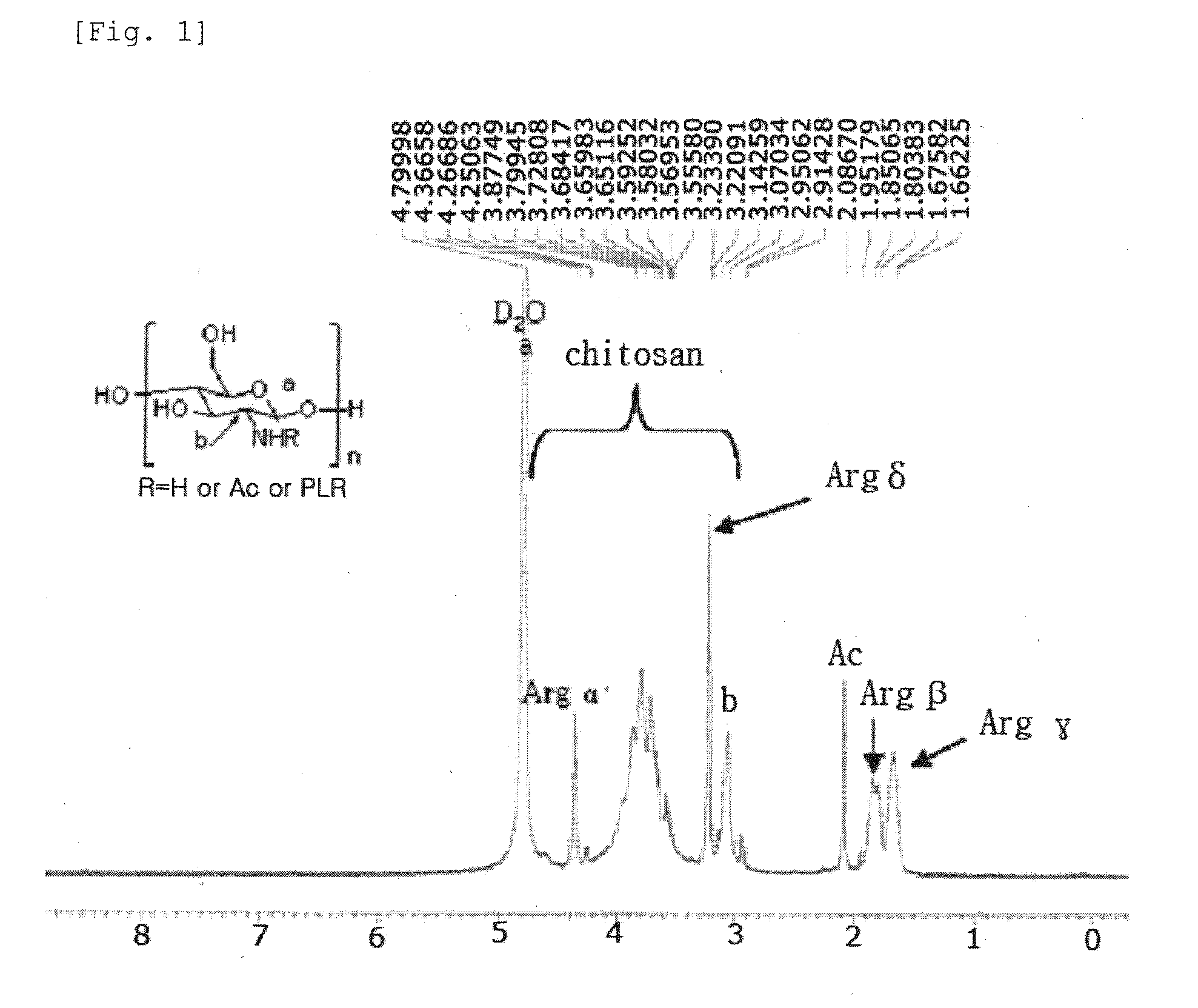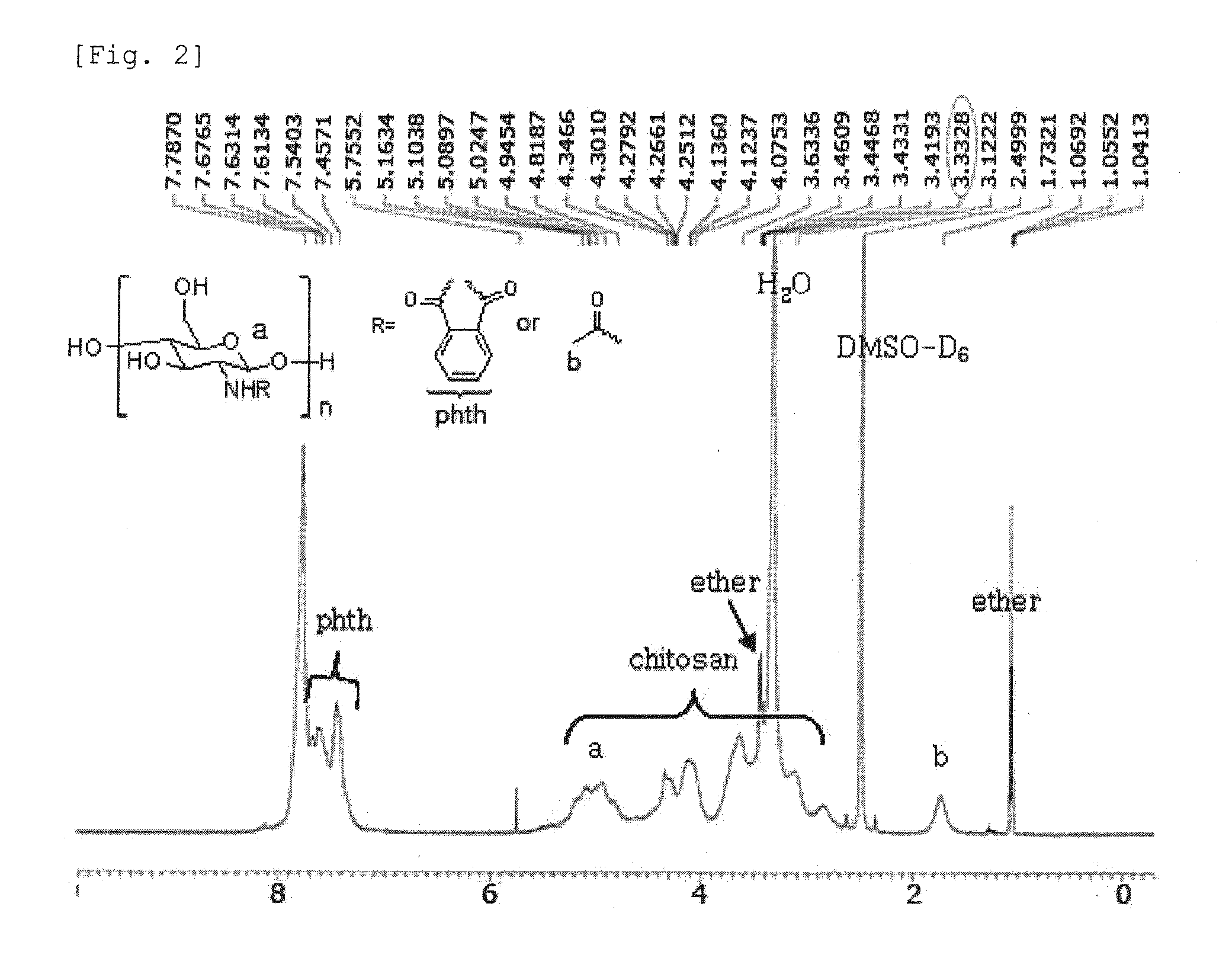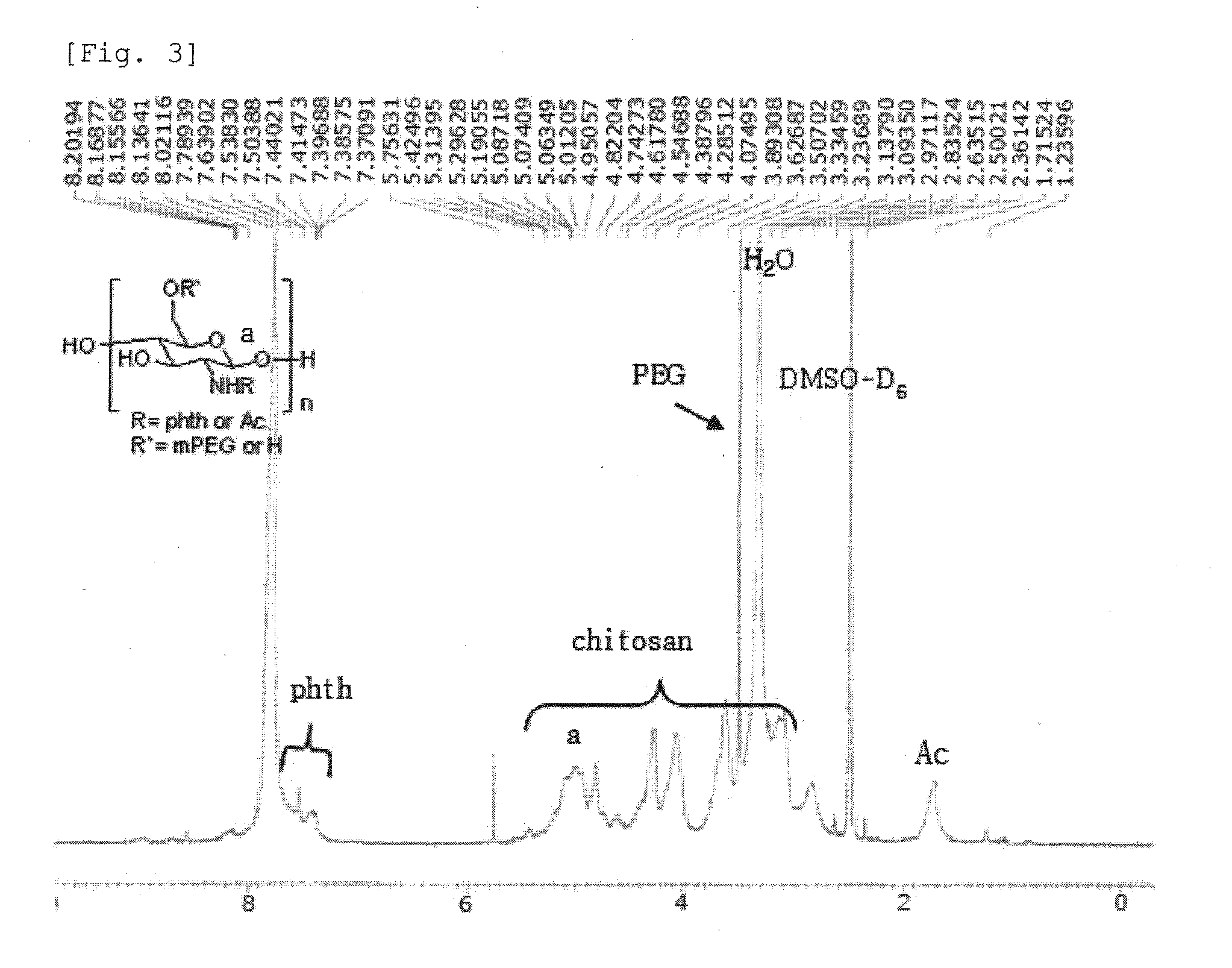Chitosan Based Polymer Conjugate and a Method for Producing the Same
a technology of chitosan and conjugate, which is applied in the direction of peptides/protein ingredients, drug compositions, peptides, etc., can solve the problems of reducing the efficiency of transfection, causing cytoxicity, and not greatly prolonging the half life of blood supply systems using such cationic polymers
- Summary
- Abstract
- Description
- Claims
- Application Information
AI Technical Summary
Benefits of technology
Problems solved by technology
Method used
Image
Examples
example 1
Preparation of LMW-chitosan-poly-L-arginine (fw 15000˜70000) Conjugate
[0061]1-1. A Low molecular weight chitosan (LMW-chitosan; fw 50000˜150000, Fluka, Swiss) was dissolved in a 0.1M HCl solution at a concentration of 20 mg / ml, and then diluted with a 50 mM MES buffer solution (pH 4.0) at a concentration of 2 mg / ml.
[0062]1-2. 1 ml of the chitosan solution prepared in Example 1-1 (fw 50000˜150000, 2 mg, 1.24×10−5 mol of pyranose units) was mixed with poly-L-arginine(PLR; fw 15000˜70000, 0.7 mg, 0.2×10−7 mol, Sigma, USA), 1-ethyl-3-(3-dimethylamino-propyl)carbodiimide (EDAC fw 191.7, 383.4 ug, 0.2×10−5 mol), and N-hydroxysulfosuccinimide (Sulfo-NHS; fw 217.14, 434.28 ug, 0.2×10−5 mol), and then subjected to reaction under stirring at room temperature for 24 hrs. The mixture was purified using a centrifugal filter (MWCO 30k, Sartorius, Germany), and then freeze-dried to give a LMW-chitosan-poly-L-arginine (fw 15000˜70000) conjugate.
[0063]1-3. 1 ml of the chitosan solution prepared in E...
example 2
Preparation of LMW-chitosan-poly-L-arginine (fw>70000) Conjugate
[0065]2-1. A LMW-chitosan-poly-L-arginine (fw>70000) conjugate was prepared in the same manner as in Example 1-2, except using PLR (fw>70000, 1.4 mg, 0.2×10−7 mol, Sigma, USA) instead of PLR (fw 15000˜70000).
[0066]2-2. A LMW-chitosan-poly-L-arginine (fw>70000) conjugate was prepared in the same manner as in Example 1-3, except using PLR (fw>70000, 2.8 mg, 0.4×10−7 mol) instead of PLR (fw 15000˜70000).
[0067]2-3. A LMW-chitosan-poly-L-arginine (fw>70000) conjugate was prepared in the same manner as in Example 1-4, except using PLR (fw>70000, 7 mg, 1×10−7 mol) instead of PLR (fw 15000˜70000).
example 3
Preparation of LMW-chitosan-poly-L-histidine (fw 5000) Conjugate
[0068]3-1. A LMW-chitosan-poly-L-histidine (fw 5000) conjugate was prepared in the same manner as in Example 1-2, except using poly-L-histidine (PLH; fw 5000, 0.1 mg, 0.2×10−7 mol, Sigma, USA) instead of PLR (fw 15000˜70000).
[0069]3-2. A LMW-chitosan-poly-L-histidine (fw 5000) conjugate was prepared in the same manner as in Example 1-3, except using PLH (fw 5000, 0.2 mg, 0.4×10−7 mol) instead of PLR (fw 15000˜70000).
[0070]3-3. A LMW-chitosan-poly-L-histidine (fw 5000) conjugate was prepared in the same manner as in Example 1-4, except using PLH (fw 5000, 0.5 mg, 1×10−7 mol) instead of PLR (fw 15000˜70000).
PUM
| Property | Measurement | Unit |
|---|---|---|
| molecular weight | aaaaa | aaaaa |
| molecular weight | aaaaa | aaaaa |
| concentration | aaaaa | aaaaa |
Abstract
Description
Claims
Application Information
 Login to View More
Login to View More - R&D
- Intellectual Property
- Life Sciences
- Materials
- Tech Scout
- Unparalleled Data Quality
- Higher Quality Content
- 60% Fewer Hallucinations
Browse by: Latest US Patents, China's latest patents, Technical Efficacy Thesaurus, Application Domain, Technology Topic, Popular Technical Reports.
© 2025 PatSnap. All rights reserved.Legal|Privacy policy|Modern Slavery Act Transparency Statement|Sitemap|About US| Contact US: help@patsnap.com



